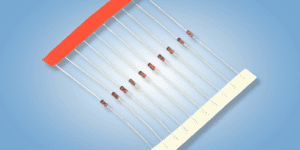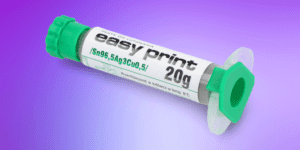Spis treści:
The Raspberry Pi and Kunbus fusion for industry & business stands tall as an interesting proposition for companies thinking about implementing Industrial Internet of Things (IIoT) solutions.
A quick leap into Industry 4.0 and IIoT? Well, it’s certainly possible, but rather not recommended. A small enterprise industrial revolution requires taking many factors into account. The old saying goes: an unthinkingly designed revolution often eats its own tail.
Quick start with Revolution Pi
RevPi is a family of PLC modules based on the Raspberry Pi Compute Module. The latest of these is the open-source RevPi Compact industrial computer. We focus mainly on Compact version today.
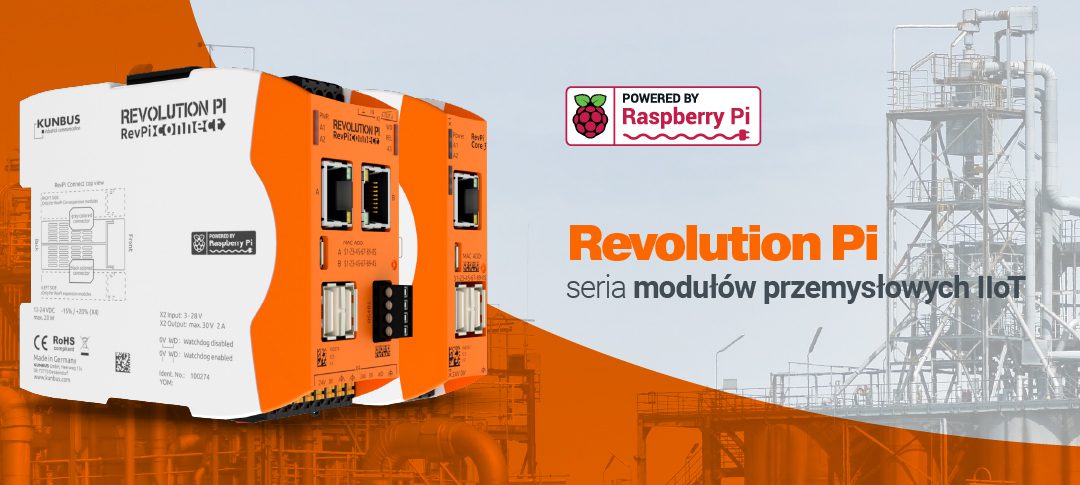
Crucial specs are:
- Broadcom BCM2837B0 ARM Cortex-A53 Quad-Core 1.2 GHz processor,
- 1 GB RAM
- 8 GB eMMC memory
An open platform function offers root level access, which gives the user more freedom in creating their own projects.
https://www.youtube.com/watch?v=TCEvLL7_hu8
Programming and handling the interface
Enclosed in a DIN rail mounted case, the Revolution Pi RevPi Compact, the most “all-in” version, is equipped with:
- 8 digital and analog inputs
- 8 digital outputs
- two analogue outputs
- 2 Ethernet interfaces
- 4-pin screw connector for RS48
Such multitude of connectors means wider possibilities of connecting peripheral devices.
The module is programmed in NodeRED environment in Python or C. It can be controlled in professional PLC (programmable logic controllers) and SCADA software. Coding in Python allows to write our own programs, using PiCtory will create a configuration file for RevPi modules, and logiCAD3 will provide handlers.
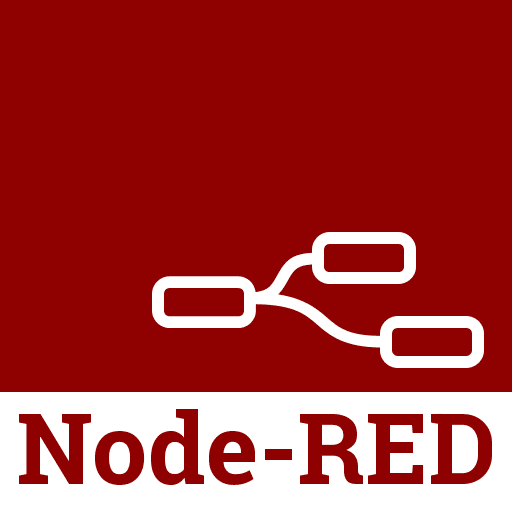
Node-RED
A visual programming tool originally developed by IBM. Created to connect hardware devices, API and online services within the IoT / IIoT. The Node-RED editor can be used to create JavaScript functions. The runtime is built on top of Node.js, and the flows created in Node-RED are stored using JSON.
The RevPi Compact, an all-in version with IO interfaces, is not modular unlike other RevPi modules. All interfaces are built in as onboard, so there is no need to connect additional modules. It is equipped with many analog and digital inputs and outputs for connecting sensors or other actuators. RevPi Compact includes 8 analog inputs (from 0 V to 10 V) and 2 analog outputs (from 0 V to 10 V), as well as 8 digital inputs and outputs. The device is also equipped with RS485 interface. All inputs and outputs are connected to screw fastenings located on the top and bottom of the device.

Equipping the RevPi Compact with two Ethernet interfaces brings the ability to operate on two networks simultaneously. Sensor data from an OT network can be transmitted over a Modbus TCP interface and sent on to the cloud or an IT system using the lightweight, low bandwidth MQTT protocol or the increasingly popular Industry 4.0 standard OPC UA .
Apart from that, on the manufacturer’s website – Kunbus – we can find numerous tutorials describing, among other things, access and password administration, working with Linux, Modbus, PiCtory or configuration of RevPi gateways for various configurations.
Industrial requirements
RevPi Connect, RevPi Core and RevPi Compact meet industrial requirements. They are CE and RoHs compliant. One of the main goals of Revolution Pi was to give the Raspberry Pi the ability to become a true compact control system, so the DIN rail and industrial 24V powered design makes computers compliant with the EN 61131-2 standard for PLC.
A glance at related RevPi Compact version parameters:
- Power supply: 24 V DC (from 10.8 V to 28.8 V)
- Work temp: from -20°C to 55°C
- EMC interference emission: according to EN 61000-6-4
- EMC immunity: in accordance with EN 61000-6-2

The difference between Raspberry Pi & RevPi
Typical Raspberry Pi microcomputers as we know them come mostly in small measures and with the same interfaces that we might find in standard PCs. The Revolution Pi modules were based on the Raspberry Pi Compute Module board, for which Kunbus in turn created an evaluation board, creating a controller with the same specification as classic PLCs.
Last October, in the context of the Raspberry Pi Foundation’s news, we got Raspberry Pi Compute Module 4, which was signed off as the optimal solution for industrial applications – such as multi-module clusters with limited space, where the CM4 performs remarkably well. Revolution Pi was developed with industrial applications in mind, too. Its capabilities can be expanded with IO interface modules and communication modules.
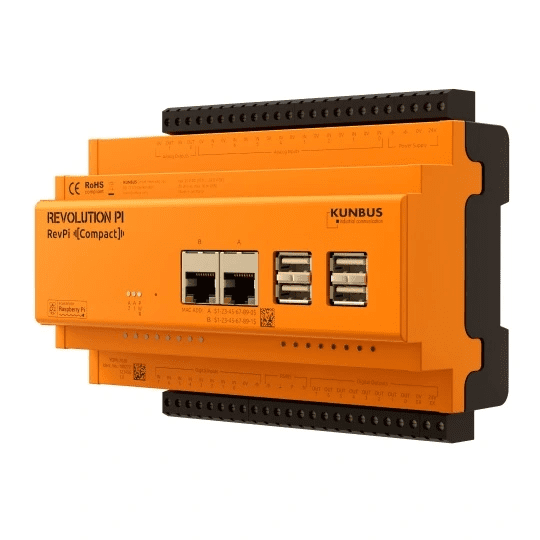

Modules, versions and their exact specifications can be found on the individual product pages of the Botland store.
How useful was this post?
Click on a star to rate it!
Average rating 0 / 5. Vote count: 0
No votes so far! Be the first to rate this post.



